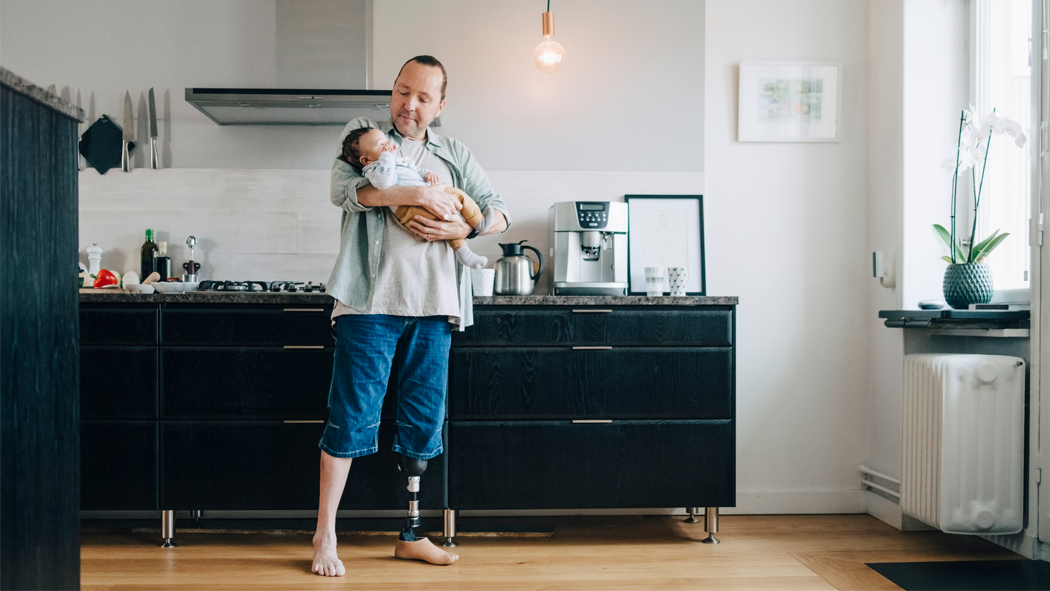
Quick Take
- A key obstacle to obtaining quality care involves transportation issues.
- People with disabilities have a higher risk of diabetes and heart disease..
- We are working to improve care access barriers for people with disabilities.
More than 61 million adults in the United States have a disability, which means more than 1 in 4 people may have issues with mobility, cognition, hearing, vision, independent living or self-care.
People with disabilities are a diverse group of individuals who represent numerous ethnicities and cultures, as well as various levels of education and socio-economic status. However, as a group they are more likely to experience greater health disparities than people without disabilities, including social determinants of health, which create additional challenges to achieving optimal health, wellness, and vitality.
Disabilities and health disparities
People with disabilities face several challenges accessing the care and services they need to maintain good health. The CDC reports that among Americans with disabilities, 1 in 4 aged 18 to 44 lack a regular health care provider (like a primary physician), and 1 in 4 aged 45 to 64 have not had a routine medical check-up in any given year.
A key obstacle to obtaining quality care involves transportation issues, especially for those that lack the means to drive or live in areas without accessible public transportation. Communication barriers can pose an additional challenge. For example, people who are hard of hearing and communicate using American Sign Language frequently have difficulty getting the information they need from the health care system. They have fewer appointments with their primary doctors and more visits to the emergency room, compared to people without a hearing disability.
Such challenges can lead to an increase in health disparities among people with disabilities, to the point where they are four times as likely to rate their health as “fair” or “poor” than people with no disabilities. They also have a higher risk of preventable health issues, such as diabetes and heart disease, and are more likely to smoke and become obese than adults without disabilities.
At The Cigna Group, we are committed to reducing health inequities wherever they exist, in order to achieve optimal health and vitality for all. This means creating innovative experiences, improved access to care, tailored products, and stronger communities. Working together with employers, local health systems, policymakers, and communities, we are investing in solutions to address health literacy, inclusivity, and economic, environmental, and social support systems – all designed to make a meaningful impact on health equity. Let’s take a look at a few examples of programs we have in place that help improve health equity for people with disabilities.
Enabling connections to care
To assist with transportation challenges, Cigna Healthcare offers a transportation benefit to Medicare Advantage members, including people younger than 65 with certain medical disabilities. This benefit covers routine transportation to medical appointments, pharmacy pickups, and other approved health-related locations within 60 miles of the member’s home. Coverage includes wheelchair-equipped vehicles if needed. Other Cigna Healthcare customers can be connected to community transportation resources via FindHelp.org.
In addition to transporting people with disabilities to their care, there are several options to bring care to them. These include telehealth appointments (including virtual care via MDLive and Confide Behavioral Health Navigator), home care services and pharmacy home delivery. We also offer digital tools that provide anytime support with overall health and wellness, as well as chronic disease management for both mental and behavioral health conditions.
Promoting health literacy
In order to better understand their benefits and care options, as well as how to take charge of their personal well-being, health literacy is essential for everyone. Cigna Healthcare provides American Sign Language interpreters to customers who need them during a Cigna Onsite Health Center visit, whether it is in person or virtual (in accordance with certain state-specific laws). Customers who are vision impaired can access benefit information and health education materials in braille, large print, and audio formats at no cost. Braille prescription bottle labels are also available.
We work with professional language assistance vendors to provide health information in these various formats across several literacy levels, so it can be understood by all. We also enable our clients and network providers to use these interpretation services at discounted rates to format their own health-related communications for all their employees and patients, whether they have Cigna Healthcare coverage or not.
In addition, Cigna services can be accessed via 711 TDD/TTY/telebraille systems.
Enhancing digital accessibility
Cigna Healthcare is committed to ensuring digital accessibility for people living with disabilities. Last year, our Achieving Better Lives for Everyone (ABLE) Employee Resource Group launched a Digital Accessibility Steering Committee, a group of cross-functional leaders across The Cigna Group who advocate for improvements in our work environment to eliminate digital accessibility barriers and to empower all of our employees to achieve their full potential. These workplace improvements are also being used to enhance the digital health experience of Cigna Healthcare customers with disabilities. For example, we’ve developed extensive digital layout and formatting guidelines for our websites, electronic communications, and digital tools to better complement the use of screen reader software, as well as make them reader-friendly for people with color blindness and dyslexia.
Our digital accessibility efforts are supported by The Cigna Group’s dedicated Experience Research Accessibility and Inclusion team, which conducts research involving people with disabilities to ensure the usability and accessibility of our digital websites, communications, applications and products.
Achieving better health and vitality for people of all abilities
Cigna Healthcare is continually exploring ways to further advance accessibility to care. For example, ABLE regularly meets with similar employee resource groups in other companies for cross-collaboration opportunities and sharing of best practices. They also conduct accessibility research at notable organizational events such as the American Council of the Blind Conference and Convention.
Cigna Healthcare has also invested in numerous nonprofits dedicated to address SDOH in local communities, including the National Multiple Sclerosis Society and the Immune Deficiency Foundation. They also provided grants to the Fenwick Foundation’s Project ADAPT to provide in-home dental care, and to VELA’s programs that enhance caregiver wellness.
All of these efforts reflect Cigna Healthcare’s ongoing commitment to help people of all abilities connect to the information and services they need to achieve their best possible health, so they can live their lives to the fullest.
For more information on ways we can help your organization improve health equity for your employees and members living with disabilities, please contact your Cigna Healthcare representative.

Recruiting, developing and empowering a diverse workforce
Diversity, equity, and inclusion (DEI) in the workforce is about empowering everyone to bring their unique skills, perspectives, and whole selves to work.
Y0036_23_994808_M